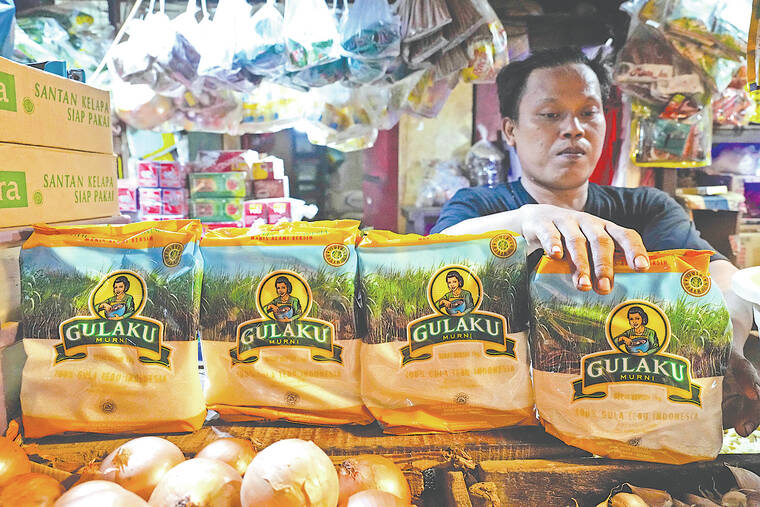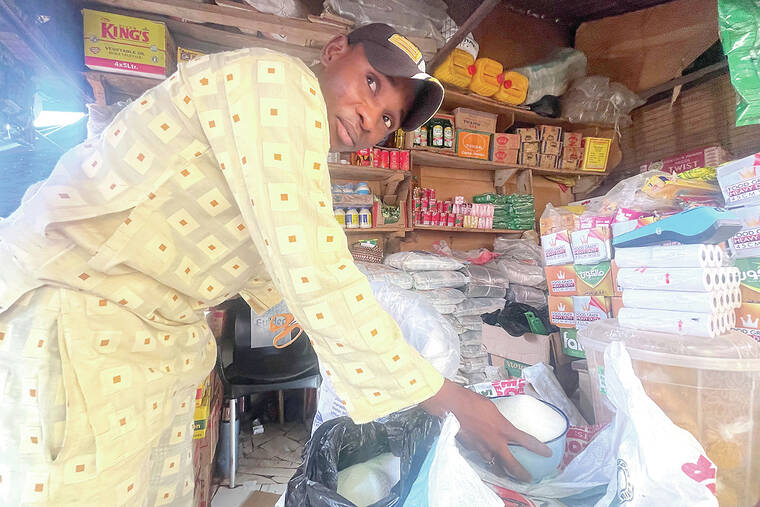Skyrocketing sugar prices left Ishaq Abdulraheem with few choices. Increasing the cost of bread would mean declining sales, so the Nigerian baker decided to cut his production by half.
For scores of other bakers struggling to stay afloat while enduring higher costs for fuel and flour, the stratospheric sugar prices proved to be the last straw, and they closed for good.
Sugar is needed to make bread, which is a staple for Nigeria’s 210 million people, and for many who are struggling to put food on the table, it offers a cheap source of calories. Surging sugar prices — an increase of 55% in two months — means fewer bakers and less bread.
“It is a very serious situation,” Abdulraheem said.
Sugar worldwide is trading at the highest prices since 2011, mainly due to lower global supplies after unusually dry weather damaged harvests in India and Thailand, the world’s second- and third-largest exporters.
This is just the latest hit for developing nations already coping with shortages in staples like rice and bans on food trade that have added to food inflation. All of it contributes to food insecurity because of the combined effects of the naturally occurring climate phenomenon El Nino, the war in Ukraine and weaker currencies. Wealthier Western nations can absorb the higher costs, but poorer nations are struggling.
The United Nations Food and Agriculture Organization is predicting a 2% decline in global sugar production in the 2023-24 season, compared with the previous year, translating to a loss of about 3.5 million metric tons (3.8 million U.S. tons), said Fabio Palmeri, an FAO global commodities market researcher. Increasingly, sugar is being used for biofuels like ethanol, so global reserves of sugar are at their lowest since 2009.
Brazil is the biggest sugar exporter, but its harvest will only help plug gaps later in 2024. Until then, import-dependent countries — like most of those in sub-Saharan Africa — remain vulnerable.
Nigeria, for instance, buys 98% of its raw sugar from other countries. In 2021, it banned imports of refined sugar that ran counter to a plan to build up domestic sugar processing and announced a $73-million project to expand sugar infrastructure. But those are longer-term strategies. Abuja traders like Abba Usman are facing problems now.
The same 50-kilogram (110-pound) bag of sugar that Usman bought a week ago for $66 now costs $81. As prices rise, his customers are dwindling.
“The price keeps increasing every day, and we don’t know why,” Usman said.
It’s partly due to the El Nino, a natural phenomenon that shifts global weather patterns and can cause extreme weather conditions ranging from drought to flooding. Scientists believe climate change is making El Nino stronger.
India endured its driest August in over a century, and crops in the western state of Maharashtra, which accounts for over a third of its sugarcane production, were stunted during the crucial growing phase.
India’s sugar production is likely to decline by 8% this year, according to the Indian Sugar Mills Association.
In Thailand, El Nino effects early in the growing season altered not just the quantity but also the quality of the harvest, said Naradhip Anantasuk, leader of the Thailand Sugar Planters Association. He expects only 76 million metric tons (84 million U.S. tons) of sugarcane to be milled in the 2024 harvest season, compared with 93 million metric tons (103 million U.S. tons) this year.
The next few months are the greatest concern, said the FAO’s Palmeri. Population growth and rising sugar consumption will further strain sugar reserves, he said.
The world now has less than 68 days of sugar in stockpiles to meet its needs, compared with 106 days when they began declining in 2020, according to data from the USDA.
“It’s at the lowest levels since 2010,” said Joseph Glauber, senior research fellow at the International Food Policy Research Institute.
Indonesia — the biggest sugar importer last year, according to the USDA — has cut back on imports and China, the No. 2 importer, was forced to release sugar from its stocks to offset high prices domestically for the first time in six years, Palmeri said.


